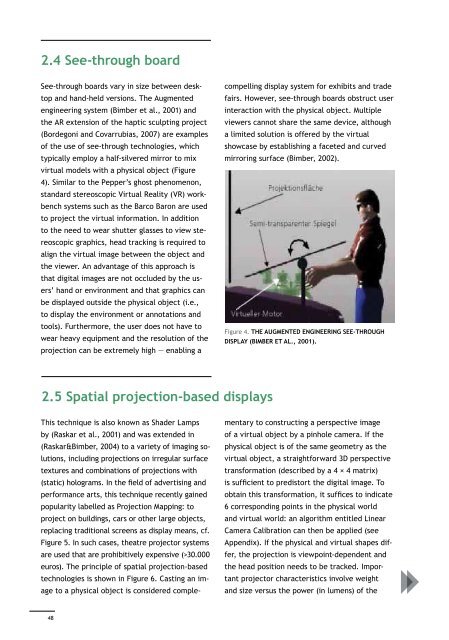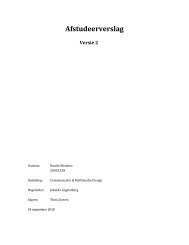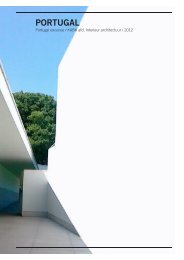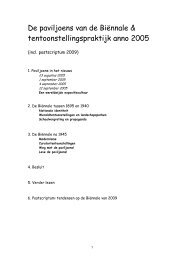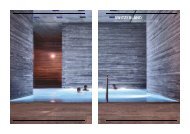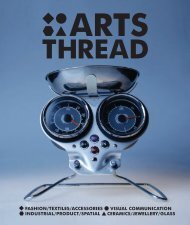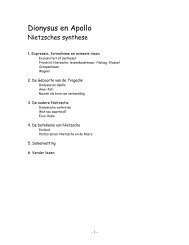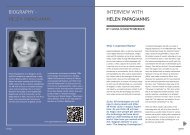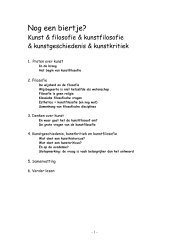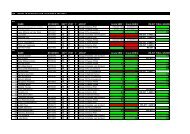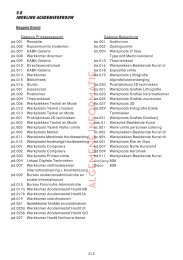download LR pdf - Kabk
download LR pdf - Kabk
download LR pdf - Kabk
You also want an ePaper? Increase the reach of your titles
YUMPU automatically turns print PDFs into web optimized ePapers that Google loves.
2.4 See-through boardSee-through boards vary in size between desktopand hand-held versions. The Augmentedengineering system (Bimber et al., 2001) andthe AR extension of the haptic sculpting project(Bordegoni and Covarrubias, 2007) are examplesof the use of see-through technologies, whichtypically employ a half-silvered mirror to mixvirtual models with a physical object (Figure4). Similar to the Pepper’s ghost phenomenon,standard stereoscopic Virtual Reality (VR) workbenchsystems such as the Barco Baron are usedto project the virtual information. In additionto the need to wear shutter glasses to view stereoscopicgraphics, head tracking is required toalign the virtual image between the object andthe viewer. An advantage of this approach isthat digital images are not occluded by the users’hand or environment and that graphics canbe displayed outside the physical object (i.e.,to display the environment or annotations andtools). Furthermore, the user does not have towear heavy equipment and the resolution of theprojection can be extremely high — enabling acompelling display system for exhibits and tradefairs. However, see-through boards obstruct userinteraction with the physical object. Multipleviewers cannot share the same device, althougha limited solution is offered by the virtualshowcase by establishing a faceted and curvedmirroring surface (Bimber, 2002).Figure 4. The Augmented engineering see-throughdisplay (Bimber et al., 2001).2.5 Spatial projection-based displaysThis technique is also known as Shader Lampsby (Raskar et al., 2001) and was extended in(Raskar&Bimber, 2004) to a variety of imaging solutions,including projections on irregular surfacetextures and combinations of projections with(static) holograms. In the field of advertising andperformance arts, this technique recently gainedpopularity labelled as Projection Mapping: toproject on buildings, cars or other large objects,replacing traditional screens as display means, cf.Figure 5. In such cases, theatre projector systemsare used that are prohibitively expensive (>30.000euros). The principle of spatial projection-basedtechnologies is shown in Figure 6. Casting an imageto a physical object is considered complementaryto constructing a perspective imageof a virtual object by a pinhole camera. If thephysical object is of the same geometry as thevirtual object, a straightforward 3D perspectivetransformation (described by a 4 × 4 matrix)is sufficient to predistort the digital image. Toobtain this transformation, it suffices to indicate6 corresponding points in the physical worldand virtual world: an algorithm entitled LinearCamera Calibration can then be applied (seeAppendix). If the physical and virtual shapes differ,the projection is viewpoint-dependent andthe head position needs to be tracked. Importantprojector characteristics involve weightand size versus the power (in lumens) of theFigure 5. Two projections on a church chapel in Utrecht (Hoeben, 2010).4849


